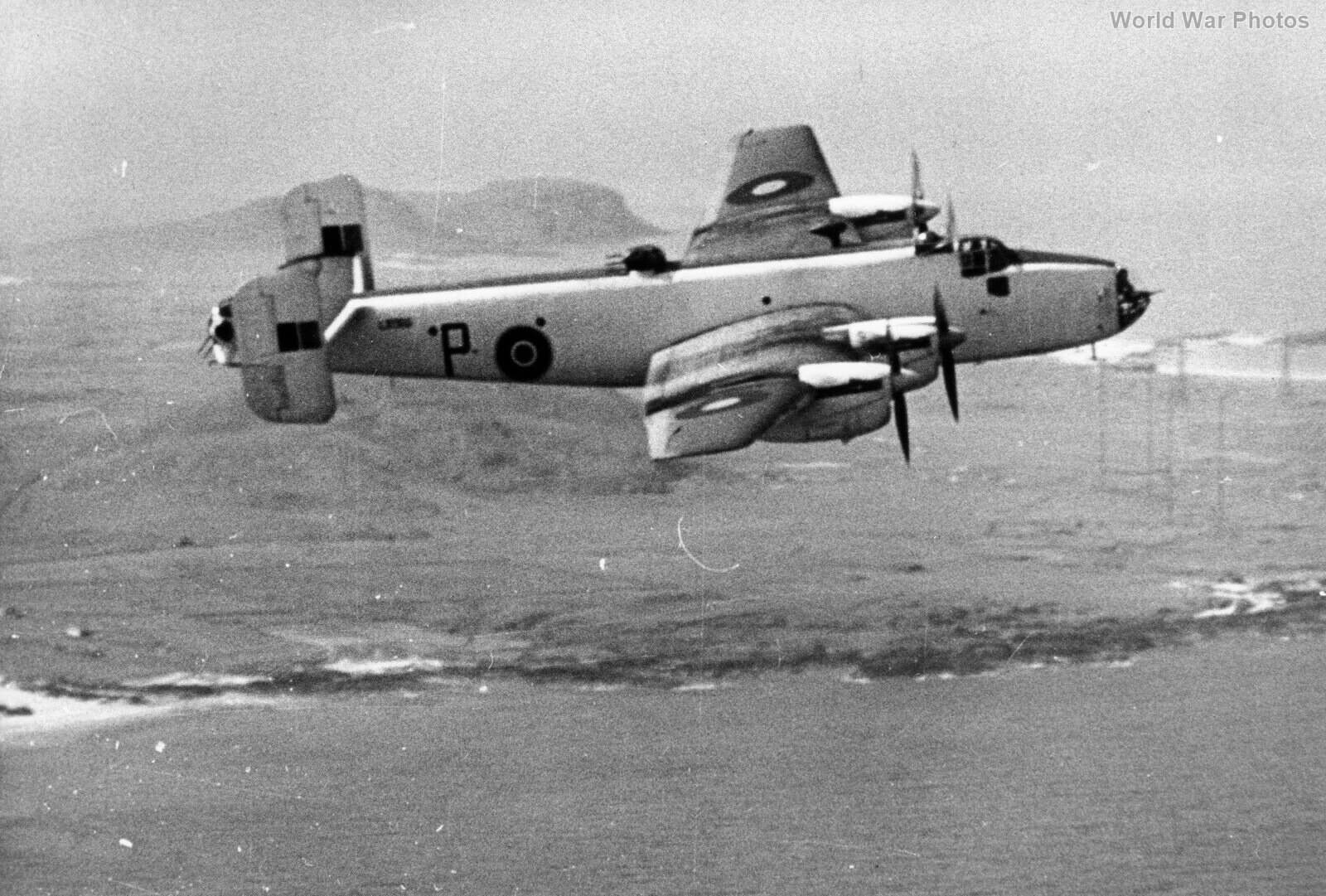Aircraft in white finish on all surfaces, with only the strict plan view in a temperate sea scheme of Extra Dark Sea Grey and Dark Slate Grey.
Halifax bombers, among other aircraft used by RAF Coastal Command, were initially equipped with a night camouflage scheme suited for their bombing missions. However, as these aircraft began to undertake general reconnaissance and anti-submarine patrols over the ocean, a need arose for a more effective camouflage that would reduce visibility to U-boat crews and enhance mission success.
New Camouflage Directive
In early February 1943, Coastal Command issued an order to adapt the camouflage scheme for general reconnaissance aircraft, including the Halifax and four-engined types like the Sunderland flying-boat. The directive specified a white finish for all surfaces, except the strict plan view, which was to be painted in a temperate sea scheme of Extra Dark Sea Grey and Dark Slate Grey. This new layout was intended to reduce the chance of being spotted at long range by U-boat crews, allowing the patrolling aircraft to approach undetected and attack before the submarine could dive and escape.
Application of the New Scheme
The new camouflage scheme replaced the earlier one where the sea scheme extended down the sides of the aircraft to meet the grey undersurfaces. The revised scheme involved:
- Front Areas: A dull matt white finish was applied to all front areas, including engine cowlings and propeller spinners, to reduce glare and visibility.
- Undersides: The undersides of the wings, tail, and fuselage were given a gloss white finish to blend with the sky when viewed from below.
- Upper Surfaces: Initially, the upper surfaces were painted Dark Sea Grey overall.
- Markings: Serials were marked in Light Slate Grey, and codes were painted in Red to ensure visibility without compromising the camouflage.
Further Adjustments in 1943
Later in 1943, Coastal Command patrol squadrons received further instructions to apply Extra Dark Sea Grey to the top surface of all aircraft. This change aimed to standardize the camouflage across the fleet and enhance its effectiveness. The Extra Dark Sea Grey remained in use on the top surfaces until the end of the war, providing a balanced compromise between concealment from above and below.
